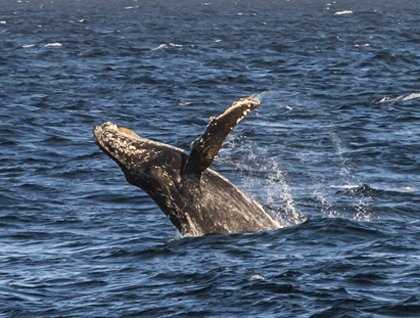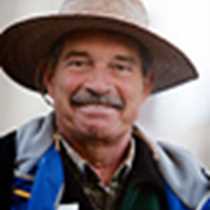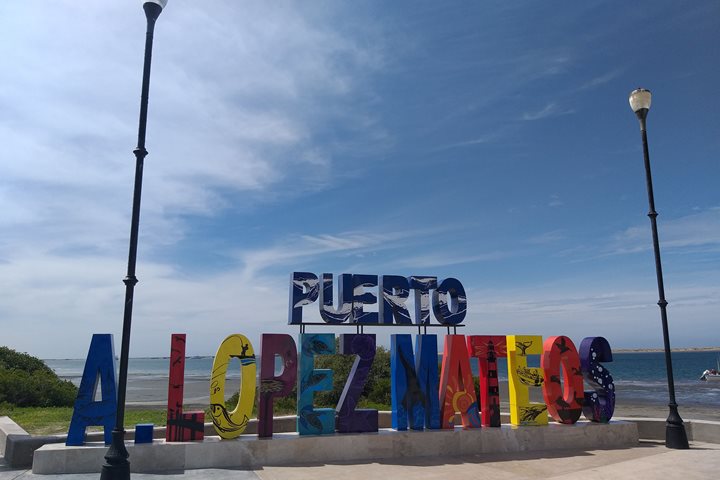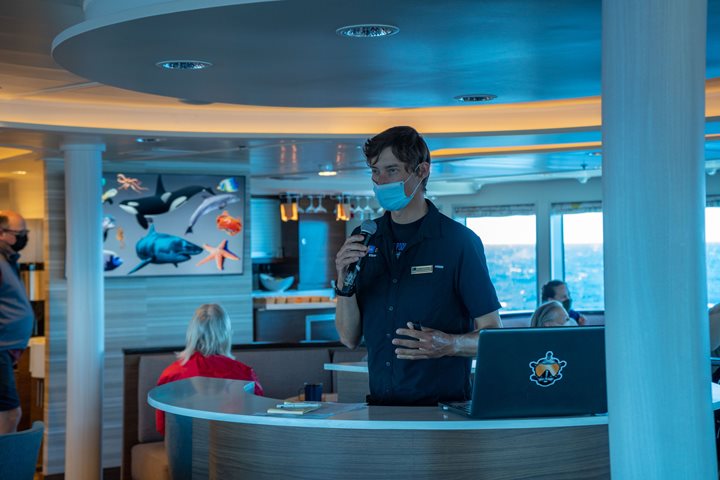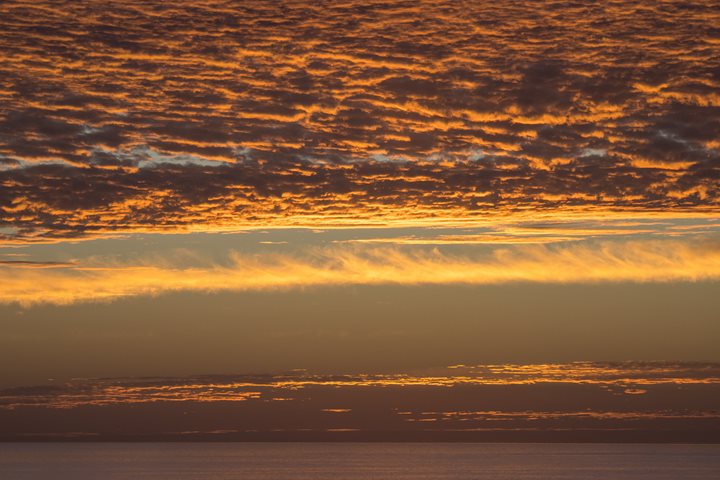Another fantastic morning at the Gulf of California. After, of course, a super dawn, we kept on sailing south, to the proximity of the end of the world (“Finisterra,” as the missionaries called it). Shortly after breakfast, we saw our first humpback whales, huffing and puffing along, always in view of land. We slowed down, and this was the prelude to a full morning of humpback sightings and observations. These humpback whales are here for the duration of winter, where they rest, males vie for supremacy, fighting other males, and the females that have been pregnant for almost a whole year birth their young. They would come up for a breath, and dive immediately, coming up a while later maybe a hundred yards ahead, having changed direction underwater.
No, this is not their feeding grounds, those are along the coast on northern U.S. and the coast of British Columbia. Every year they make this long migration to these waters, along the Pacific Coast of Mexico, more or less from Sinaloa down to Acapulco. They have accumulated enough blubber fat to serve as reserves for their hunger and for the females, to begin suckling their young down here. After about four months they all return on their long migration to the northern productive waters, where they can catch sardines and other small fish!
Immediately after lunch, we set off to visit the town of San Jose del Cabo, where birders had the chance to see a good variety of birds in the “Estero,” and others chose to walk into town to visit the many little stores or art galleries that puncture the streets of this small city.
After we had all returned to the ship, off we went to our next adventure: the arch of the rocks of Finisterra. The end of the peninsula. Here we approached carefully and saw a small group of California sea lions barking away. Big numbers of frigates, pelicans, and cormorants, as well as brown boobies and blue-footed boobies, use these last rocks of the peninsula as a night roost. So we kept on our trip to the west, along an unhappy ocean, hoping to arrive tomorrow morning to the “Boca” or Mouth of Magdalena Bay, between the islands of Margarita and those of Isla Magdalena.

